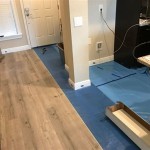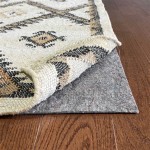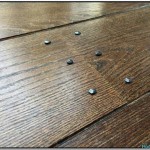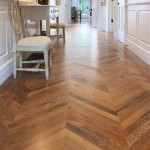Installing a moisture barrier under your laminate flooring on a concrete slab is an important step that should not be overlooked. A moisture barrier helps to protect the laminate flooring from damage caused by moisture and humidity. While it is possible to install laminate flooring over a concrete slab without a moisture barrier, it will make the flooring far less durable and prone to damage.
Types of Moisture Barriers
There are two main types of moisture barriers that can be used on a concrete slab: a sheet of plastic or a liquid-applied membrane. Both types of moisture barriers are designed to protect the flooring from moisture, but they have varying levels of effectiveness. A sheet of plastic is the most cost-effective option, but it is not as effective at blocking moisture as a liquid-applied membrane.
Advantages of Using a Moisture Barrier
Using a moisture barrier provides several advantages for laminate flooring on a concrete slab. It helps to protect the flooring from damage caused by moisture and humidity, which can cause warping, buckling and other issues. It also helps to reduce the amount of dust, dirt and allergens that can build up under the flooring, making it easier to keep the area clean. In addition, a moisture barrier can help to improve the durability of the flooring, as it will be less prone to damage due to moisture.
Installation Process
The process of installing a moisture barrier on a concrete slab is relatively simple. The first step is to clean the concrete slab to remove any dirt, dust or debris. Once the slab is clean, the moisture barrier can be laid down and secured with adhesive. It is important to ensure that the barrier is laid down in a single, continuous piece, with all seams sealed to ensure a water-tight seal. The barrier should then be covered with an additional layer of plastic film or foil, to provide an extra layer of protection.
Costs Associated with a Moisture Barrier
The cost of a moisture barrier for a concrete slab will vary depending on the type of barrier being used. Sheet plastic is typically the most cost-effective option, while liquid-applied membranes are more expensive. In addition, the cost of installation should also be taken into consideration, as it can add to the overall cost of the project.
Maintenance and Care
Once the moisture barrier is installed, it is important to take proper care of it in order to maintain its effectiveness. The barrier should be checked periodically for any signs of damage or wear and tear, and any gaps or seams should be sealed with caulk as needed. In addition, it is important to keep the area clean and free of debris, as this can help to reduce the amount of moisture that is able to build up under the flooring.
Conclusion
Installing a moisture barrier for laminate flooring on a concrete slab is an important step that should not be overlooked. A moisture barrier helps to protect the flooring from damage caused by moisture and humidity, as well as reducing the amount of dust and allergens that can build up under the flooring. The cost and installation process of a moisture barrier will vary depending on the type of barrier being used. It is important to take proper care of the barrier to ensure that it remains effective, and to keep the area clean and free of debris.
![[SOLVED] Suggestions to hold floating laminate floor from sliding on vapor barrier installed](https://i2.wp.com/i.stack.imgur.com/47Nsi.jpg)










/laminate-flooring-underlayment-1314969-hero-3894e0b403fb4e59a87a076e3da9914f.jpg)



Related Posts








